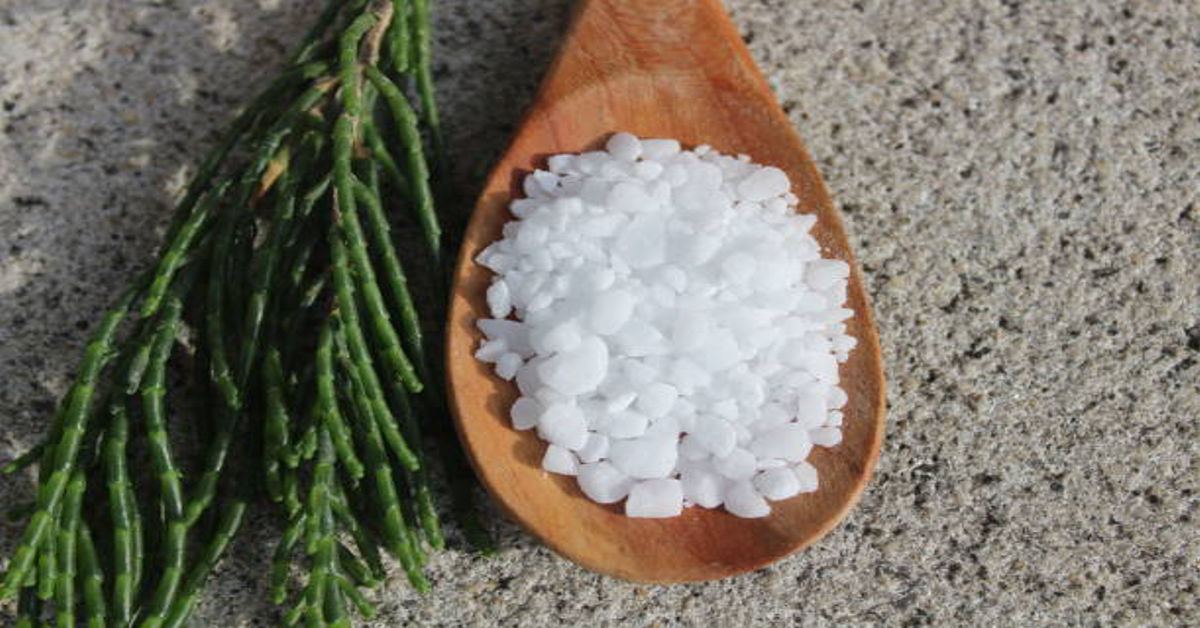Salt has played an essential role in human civilization since ancient times. It is not just a seasoning that enhances flavor but also a fundamental element for survival, helping regulate hydration, nerve function, and cellular balance. Among the many varieties of natural salts available today, Celtic salt has gained immense recognition for its purity, mineral content, and traditional harvesting methods. Often described as “the salt of the sea,” Celtic salt carries the essence of coastal France — unrefined, mineral-rich, and naturally moist.
This article explores Celtic salt in depth — its origin, production, mineral composition, health benefits, culinary applications, comparison with other salts, and how it fits into modern nutrition.
1. The Origin and History of Celtic Salt
Celtic salt, sometimes referred to as Sel Gris (French for “grey salt”), originates from the coastal regions of Brittany, France, specifically the Guérande Peninsula. The name “Celtic” relates to the ancient Celtic people who inhabited this region and practiced early forms of salt harvesting centuries ago.
What makes Celtic salt distinctive is the traditional method of extraction that has been preserved for hundreds of years. Unlike industrialized salts that undergo chemical refining, Celtic salt is hand-harvested using wooden tools and sun-drying techniques that preserve its natural minerals. It is collected from clay-lined salt ponds, where seawater evaporates naturally under the sun and wind, leaving behind moist, mineral-dense crystals.
This artisanal process connects Celtic salt to both cultural heritage and environmental sustainability. The salt farmers, known as paludiers, pass down their craft through generations, maintaining a balance between nature and production.
Celtic salt’s natural grey hue comes from the mineral-rich clay in the salt beds, which imparts trace minerals such as magnesium, potassium, and calcium. This mineral content not only influences its color but also enhances its flavor and nutritional value.
2. How Celtic Salt Is Produced
The harvesting process of Celtic salt is a delicate and respectful interaction with nature. It follows four main steps, ensuring that the salt remains unrefined, pure, and nutrient-rich.
| Stage | Process Description | Purpose |
|---|---|---|
| 1. Channeling Seawater | Seawater from the Atlantic Ocean is guided into shallow clay ponds using natural tide movements. | Introduces raw material into the salt pans. |
| 2. Natural Evaporation | Sunlight and wind slowly evaporate the water over days or weeks. | Concentrates salt minerals without heating. |
| 3. Crystallization | As water evaporates, salt crystals form and settle on the pond’s surface. | Produces naturally moist grey crystals. |
| 4. Hand Harvesting | Skilled salt workers collect the crystals with wooden rakes. | Ensures purity and minimal disturbance to the environment. |
No artificial drying or bleaching is used. The salt remains moist to the touch, a characteristic that indicates its preserved mineral structure. This moisture helps maintain electrolyte balance when consumed and enhances its texture when used in cooking.
3. Composition and Mineral Profile of Celtic Salt
Unlike refined table salt, which is almost purely sodium chloride (99.9%), Celtic salt contains a broad spectrum of trace minerals. These minerals occur naturally in seawater and contribute to the body’s essential functions.
Typical Mineral Composition of Celtic Salt
| Nutrient / Mineral | Approximate Content | Role in the Body |
|---|---|---|
| Sodium (Na) | 34–36% | Regulates fluid balance, nerve impulses, and muscle contractions. |
| Chloride (Cl) | 55–58% | Maintains acid-base balance and digestion (forms stomach acid). |
| Magnesium (Mg) | 0.3–0.5% | Supports enzyme activity, heart rhythm, and relaxation. |
| Calcium (Ca) | 0.1–0.2% | Essential for bone strength and nerve signaling. |
| Potassium (K) | 0.1% | Balances sodium and supports cardiovascular health. |
| Iron (Fe) | Trace | Aids in oxygen transport in the blood. |
| Zinc (Zn) | Trace | Supports immunity and metabolism. |
| Iodine (I) | Trace (natural) | Helps regulate thyroid function. |
This natural mineral diversity makes Celtic salt nutritionally superior to refined table salt, which loses these trace elements during industrial bleaching and processing.
4. Physical Characteristics and Types of Celtic Salt
Celtic salt is instantly recognizable for its moist, clumpy texture and light grey color. The greyish tone results from contact with the natural clay in the salt beds, and its moisture level typically ranges between 8–10%, distinguishing it from dry salts.
There are two main varieties commonly produced:
| Type | Appearance | Texture | Common Uses |
|---|---|---|---|
| Sel Gris (Grey Celtic Salt) | Light grey, coarse crystals | Moist and granular | Finishing salt, seasoning, baking, roasting |
| Fleur de Sel (Flower of Salt) | Pale white, delicate flakes | Dry and flaky | Gourmet finishing, salads, seafood, desserts |
Both types are natural and minimally processed, yet they serve different culinary purposes. Fleur de Sel is often considered the premium variety, formed as a thin crust on the surface of salt ponds and harvested under specific weather conditions.
5. Health Benefits of Celtic Salt
Celtic salt’s popularity stems not just from its flavor but from its potential health advantages. While moderation remains key in all forms of salt consumption, unrefined salts like Celtic salt offer a range of supportive benefits due to their mineral composition and natural balance.
1. Electrolyte Balance
Celtic salt provides a natural blend of sodium, magnesium, and potassium — the body’s key electrolytes. These minerals help regulate hydration, nerve transmission, and muscle function. Athletes and individuals in hot climates can particularly benefit from small amounts to prevent dehydration and cramps.
2. Improved Digestion
When taken in moderation, Celtic salt stimulates saliva production and supports the formation of hydrochloric acid (HCl) in the stomach, improving digestion and nutrient absorption. It can also aid in reducing bloating and gas by promoting healthy digestive enzyme function.
3. pH Balance and Alkalinity
Unlike refined salt, which can create acidity in the body when overused, Celtic salt’s mineral profile helps maintain an alkaline environment. This supports cellular function and may reduce fatigue or inflammation related to acidic conditions.
4. Blood Pressure Regulation
Contrary to popular belief, not all salt intake leads to high blood pressure. Studies have indicated that natural salts with balanced mineral content may help regulate rather than spike blood pressure levels, especially when combined with a healthy diet.
5. Skin and Detox Benefits
Celtic salt is often used in bath soaks and scrubs due to its detoxifying properties. It can draw out impurities from the skin, improve circulation, and relieve muscle soreness. The trace minerals also nourish the skin, leaving it soft and refreshed.
6. Culinary Uses of Celtic Salt
Celtic salt is not only a health-enhancing mineral source but also a gourmet ingredient favored by chefs worldwide. Its moisture, flavor complexity, and mineral depth make it suitable for a wide range of culinary applications.
Common Culinary Applications of Celtic Salt
| Use | How It’s Used | Benefits |
|---|---|---|
| Cooking Salt | Added during cooking or grilling. | Enhances flavor and retains food’s natural moisture. |
| Finishing Salt | Sprinkled over dishes before serving. | Provides a crunch and mineral burst. |
| Baking Salt | Used in bread and pastry recipes. | Regulates yeast activity and balances sweetness. |
| Brining | Dissolved in water for curing meats or pickling vegetables. | Preserves and enhances flavor. |
| Fermentation | Aids in creating fermented foods like sauerkraut or kimchi. | Promotes beneficial bacterial growth. |
Celtic salt’s moist nature prevents it from being used in fine sprinklers, so it’s best stored in airtight containers and ground fresh when needed.
7. Celtic Salt vs. Other Natural Salts
There are many natural salts on the market today, including Himalayan pink salt, sea salt, and rock salt. Understanding how Celtic salt differs helps clarify its unique value.
| Feature | Celtic Salt | Himalayan Pink Salt | Refined Table Salt |
|---|---|---|---|
| Color | Grey or light silver | Pink or coral | White |
| Processing | Hand-harvested, unrefined | Mined, minimally processed | Chemically refined |
| Texture | Moist, coarse | Dry, crystalline | Fine |
| Mineral Content | 60+ trace minerals | 80+ trace minerals | Mostly sodium chloride |
| Taste | Briny and mineral-rich | Mild, slightly sweet | Sharp and intense |
| Moisture Content | 8–10% | <1% | 0% |
| Primary Source | Atlantic coast (France) | Khewra mines (Pakistan) | Industrial production |
While Himalayan salt and Celtic-salt are both natural, the moisture and mineral balance of Celtic salt makes it especially beneficial for those seeking a more authentic sea-derived mineral source.
8. Using Celtic Salt in Daily Life
Incorporating Celtic-salt into your daily routine doesn’t have to be limited to the kitchen. Its unique mineral composition makes it valuable for a variety of uses.
Daily Applications:
- Morning Hydration: Add a pinch of Celtic-salt to a glass of water to restore electrolyte balance upon waking.
- Cooking and Seasoning: Replace table salt with Celtic-salt for natural flavor enhancement.
- Bath Soaks: Add a handful to warm bathwater for relaxation and detoxification.
- Salt Scrubs: Mix with coconut or olive oil for an exfoliating, mineral-rich skin treatment.
- Oral Rinses: Use a small amount dissolved in water to support oral hygiene and gum health.
Its versatility extends from culinary use to natural wellness, emphasizing its holistic role in human health.
9. Storage and Handling of Celtic Salt
Celtic salt’s moist nature requires careful storage to preserve its texture and prevent clumping. It should be kept in non-metallic, airtight containers such as glass jars or ceramic pots. Exposure to air can cause evaporation and drying, altering its mineral balance and texture.
Storage Tips:
- Keep it away from direct sunlight and heat sources.
- Avoid storing near moisture-sensitive foods.
- Use a dedicated wooden or ceramic spoon for handling.
- If it hardens, place it in a sealed container with a damp cloth for several hours to reabsorb moisture.
Proper handling ensures the salt remains as authentic and potent as the day it was harvested.
10. Potential Considerations and Moderation
While Celtic-salt is a natural product, moderation remains crucial. Overconsumption of sodium — regardless of source — can stress the cardiovascular system. The recommended daily intake of salt for adults generally falls between 2–5 grams, depending on dietary needs and activity level.
Who Should Be Cautious:
- Individuals with hypertension or kidney disorders.
- People on sodium-restricted diets.
- Those with medical conditions requiring fluid balance regulation.
The key is to view Celtic-salt as a nutrient enhancer, not as a medicinal cure or unlimited substitute.
11. Environmental and Ethical Dimensions
Celtic salt production is one of the most environmentally friendly methods of salt extraction. It relies purely on solar evaporation, wind, and manual labor — producing zero chemical waste. Unlike large-scale mining operations, this process protects marine ecosystems and supports sustainable local employment.
Environmental Benefits of Celtic Salt Production
| Aspect | Impact |
|---|---|
| Energy Use | Minimal, solar-powered evaporation only. |
| Pollution | None — no chemicals or machinery. |
| Biodiversity | Salt marshes support birdlife and marine species. |
| Local Economy | Sustains traditional livelihoods of salt farmers. |
Thus, choosing Celtic salt is not just a dietary choice but also a vote for sustainability and cultural preservation.
12. Celtic Salt in Modern Nutrition and Wellness
In holistic nutrition, Celtic-salt is valued not only for its taste but for its synergistic balance of minerals. Nutritionists and wellness practitioners often recommend it as part of natural hydration solutions, especially in combination with lemon water or herbal infusions.
It is also used in:
- Mineral replenishment after sweating or workouts.
- Natural electrolyte drinks mixed with honey and lemon.
- Alkaline detox routines for pH balance.
- Cleansing diets where processed salts are avoided.
Because it is rich yet gentle, Celtic salt complements clean eating, paleo, keto, and plant-based diets alike.
13. Future Outlook: Reviving Ancient Traditions
As consumers become more conscious about where their food comes from, the demand for artisanal, traceable, and chemical-free products continues to grow. Celtic salt’s revival is a reflection of this trend — blending ancient harvesting traditions with modern nutritional understanding.
Future innovations may include:
- Integration into functional foods and supplements.
- Use in natural skincare and spa treatments.
- Scientific research into its micro-mineral interactions with cellular health.
Celtic salt thus represents a bridge between ancient wisdom and contemporary wellness, offering both nourishment and sustainability.
Conclusion
Celtic salt is more than a condiment; it is a natural mineral complex crafted by the sea, the sun, and human hands. With its origin rooted in the coastal traditions of Brittany, its purity preserved through artisanal methods, and its nutrient profile aligned with human health, Celtic salt stands as one of nature’s purest gifts.
Whether enhancing the taste of a dish, balancing electrolytes, or nurturing the skin, it embodies a philosophy of wholeness and respect for nature. In a world dominated by processed and artificial foods, Celtic salt reminds us of the beauty of simplicity — unrefined, rich, and profoundly connected to the earth.
Frequently Asked Questions (FAQs)
1. What makes Celtic salt different from regular table salt?
Celtic salt is unrefined and hand-harvested from seawater, retaining over 60 trace minerals. Table salt is industrially processed, losing most natural nutrients.
2. Can Celtic salt help with hydration?
Yes. Its natural balance of sodium, magnesium, and potassium supports electrolyte replenishment, helping maintain hydration levels and muscle function.
3. Is Celtic salt suitable for daily cooking?
Absolutely. It enhances flavor while supplying essential minerals. It can be used in cooking, baking, or as a finishing salt.
4. Does Celtic salt contain iodine?
Celtic salt contains trace amounts of naturally occurring iodine but not enough to replace iodized salt for individuals with iodine deficiency.
5. How should I store Celtic salt?
Store it in airtight glass or ceramic containers, away from direct sunlight. Its natural moisture should be preserved for maximum freshness.









